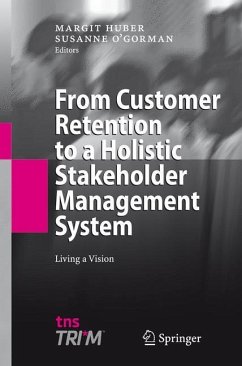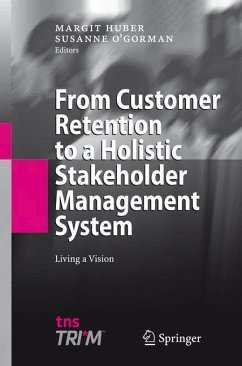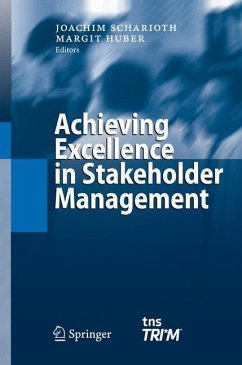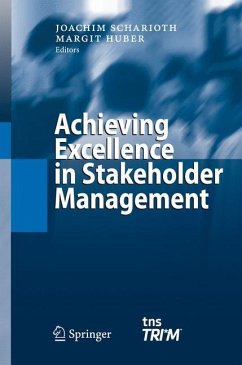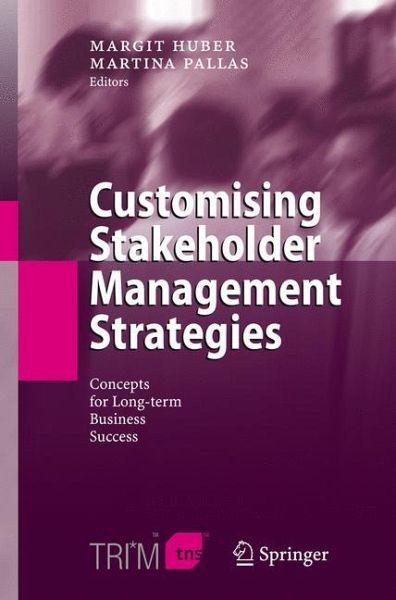
Customising Stakeholder Management Strategies
Concepts for Long-term Business Success
Herausgegeben: Huber, Margit; Pallas, Martina

PAYBACK Punkte
16 °P sammeln!
The third in the series on Stakeholder Management, this volume presents a wide array of case studies to demonstrate how Stakeholder Management strategies are customized specifically to companies' requirements to fulfill their long term business goals. In addition, this volume discusses the benefits of using other management concepts such as Six Sigma (a method that analyses and limits process variation) in conjunction with the TRI*M methodology.
Stakeholder Management - From Management Philosophy to a Tool for Everyday Working Life Use of Stakeholder Management Today In times of growing globalisation and increasingly tough c- petition the use of stakeholder management tools is becoming much more widespread. Nowadays, the concept of stakeholder mana- ment is no longer limited to the specific focusing of all corporate activity on interest groups, such as customers, employees, sha- holders or suppliers, but has become an integral part of a company's daily action. Measuring the quality of relationships between companies/insti- tions and the relevant interest groups, developing actions aimed at improving these relationships (managing) and the continuous mo- toring of the effects in line with the TRI_M approach, is gaining momentum in all areas and at all levels of companies and ins- tutions. Today, human resources departments usually measure the comm- ment of employees in all organisational units on an annual basis, and senior managers develop strategies with their employees to the level of commitment, the success of which will ultimately be reviewed through subsequent measuring. This greater focus on employee commitment has only recently been given priority. For a long time, companies have failed to appreciate that the motivation and engagement of employees is the most important basis for excellent customer experiences and, consequently, profitability. Only engaged and motivated employees will use all their skills and energies for the benefit of the company.





